EARTH DAY DIY PROJECTS
Need ideas for a new garden project? Check out what your neighbors have been up to while staying at home.

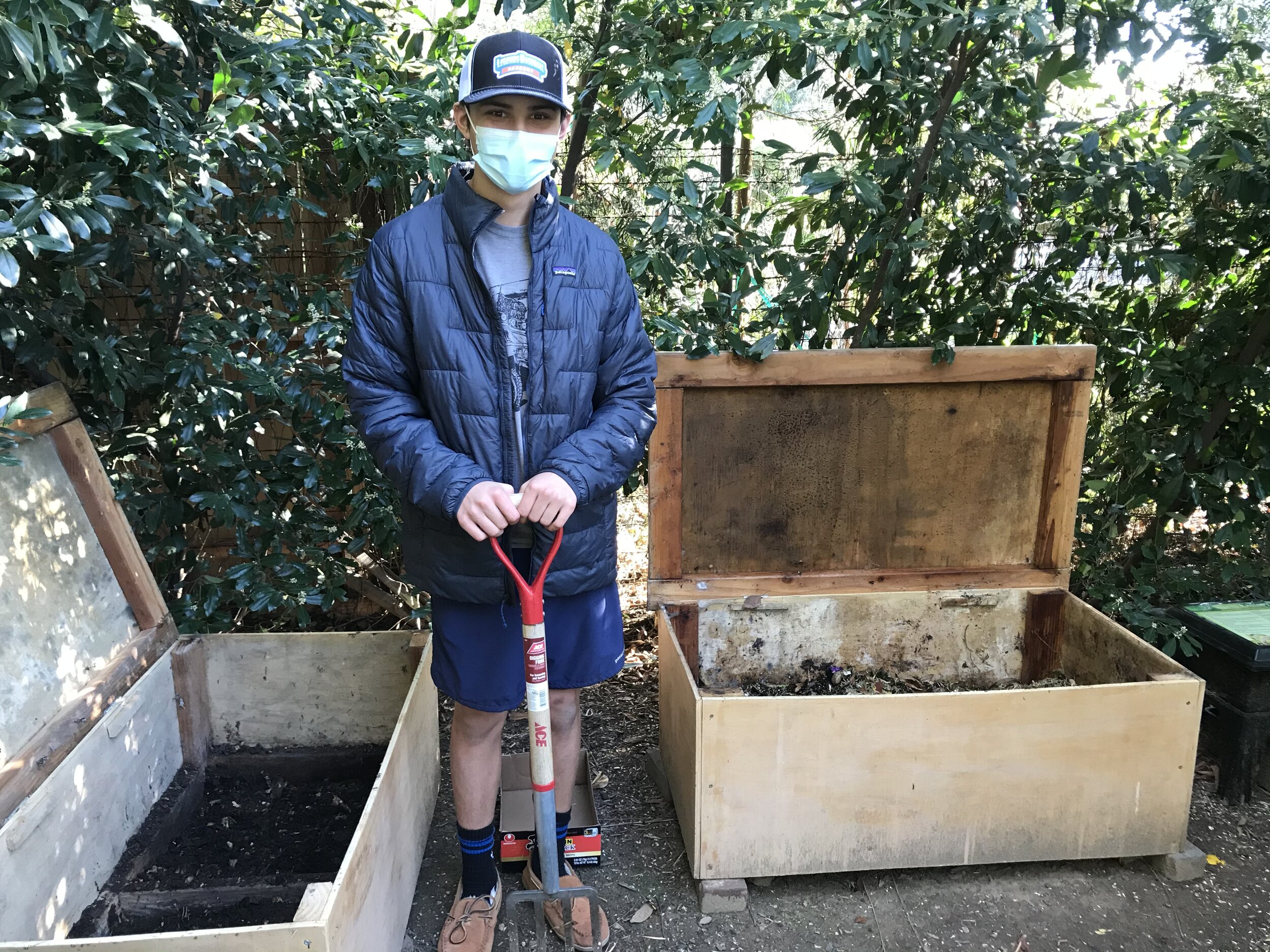
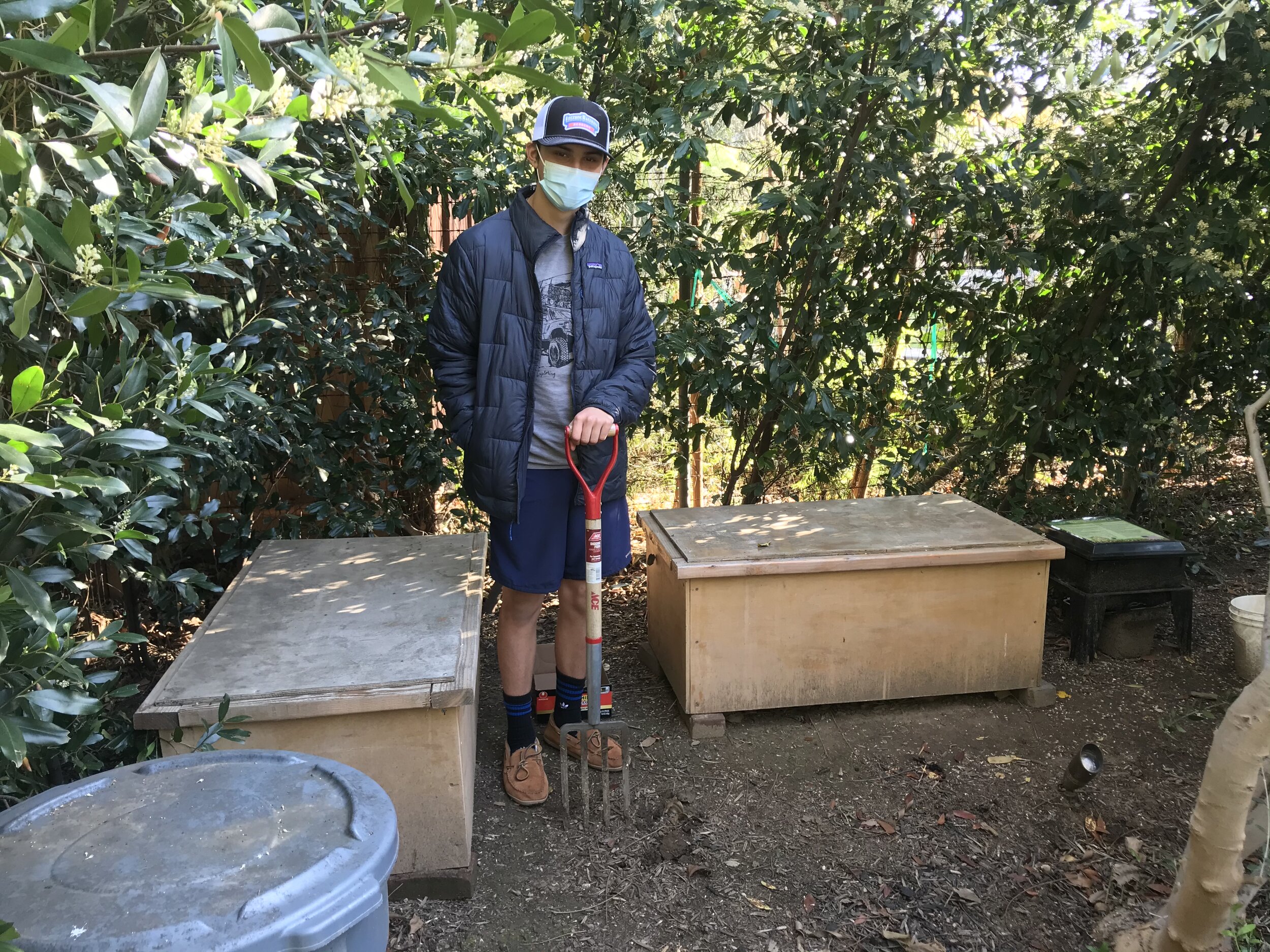
COMPOSTING AND GROWING VEGGIES FROM SEEDS
The Rowley Heidel family had been meaning to start a compost bin for many years, but had never taken the time to figure out the process. In March 2020, their 8th grade son got involved in a compost project through his school. He was enthusiastic about it and shared some ideas with his family. Right around the same time the Los Angeles County stay-at-home orders left them with a lot of time on their hands. After a bit of research and reaching out to a friend who had made her own compost worm bins, they got to work. They built one compost box and quickly realized that they would want another to accommodate all of their compostable material. Now they have plenty of compost to use for their garden
Around the same time, they started revamping their raised garden beds. The beds were gifted from friends many years ago and they had used them for tomatoes and herbs. During the COVID shut down they started drying out their own seeds and seeing what they could grow. Right now they have herbs and onions, lettuce, radishes from store-bought seeds. Other vegetables –peppers, pumpkins, tomatoes and potatoes – are grown from seeds and scraps they have collected from their own kitchen. They add the compost to the beds and several fruit trees that they have in their yard. “It is really gratifying to grow your own food and know that your food waste is being put back into the ecosystem in a useful way. “

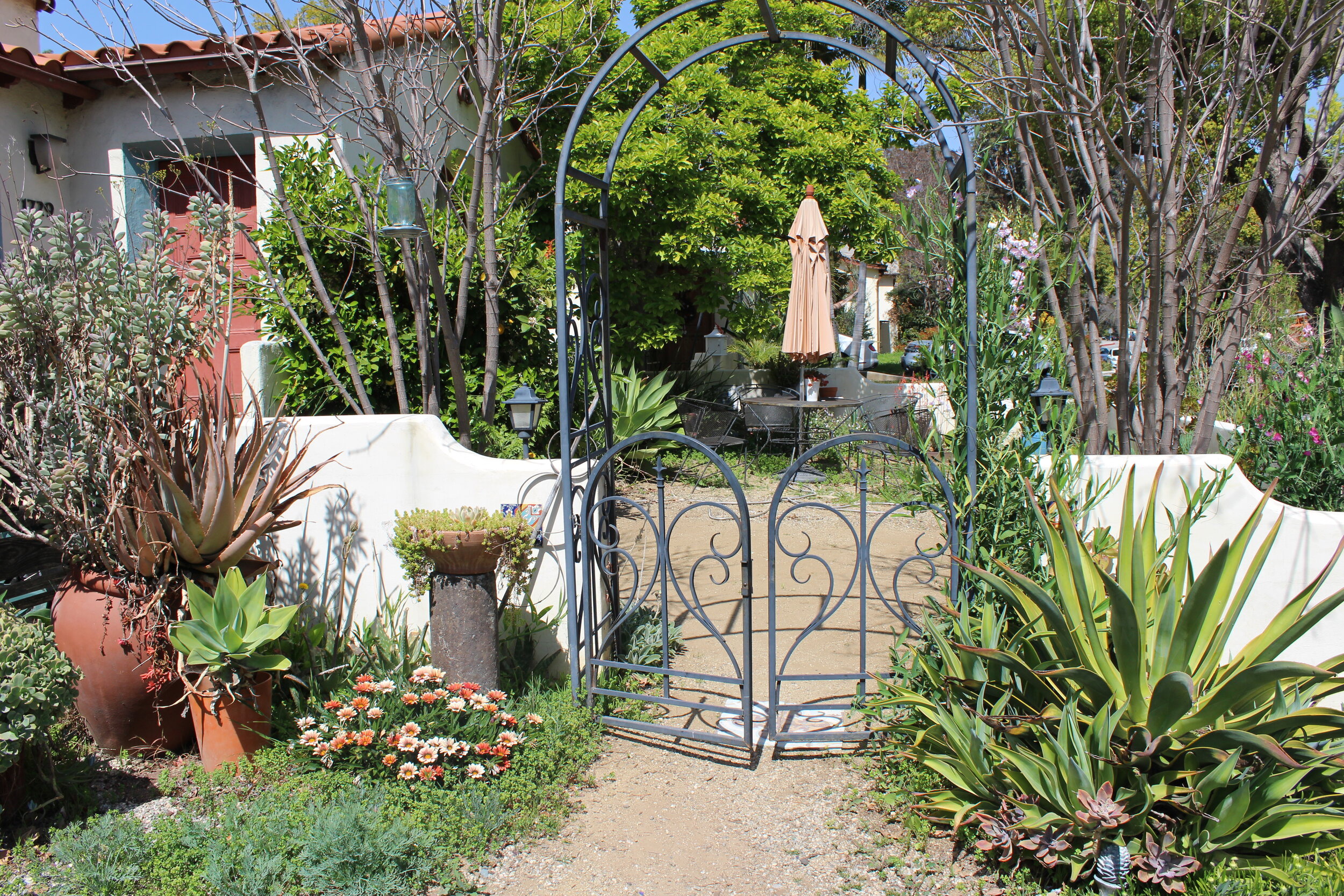
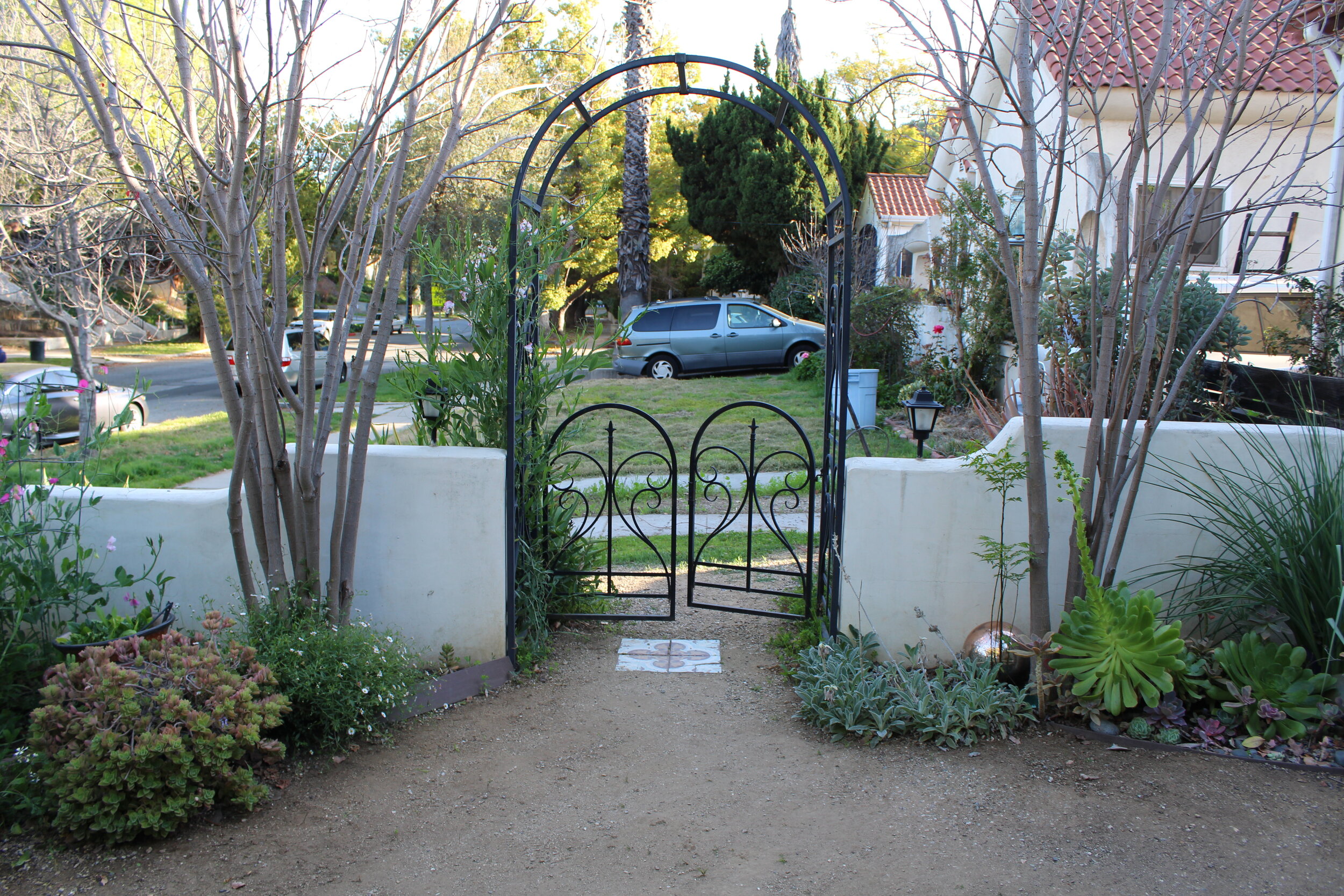
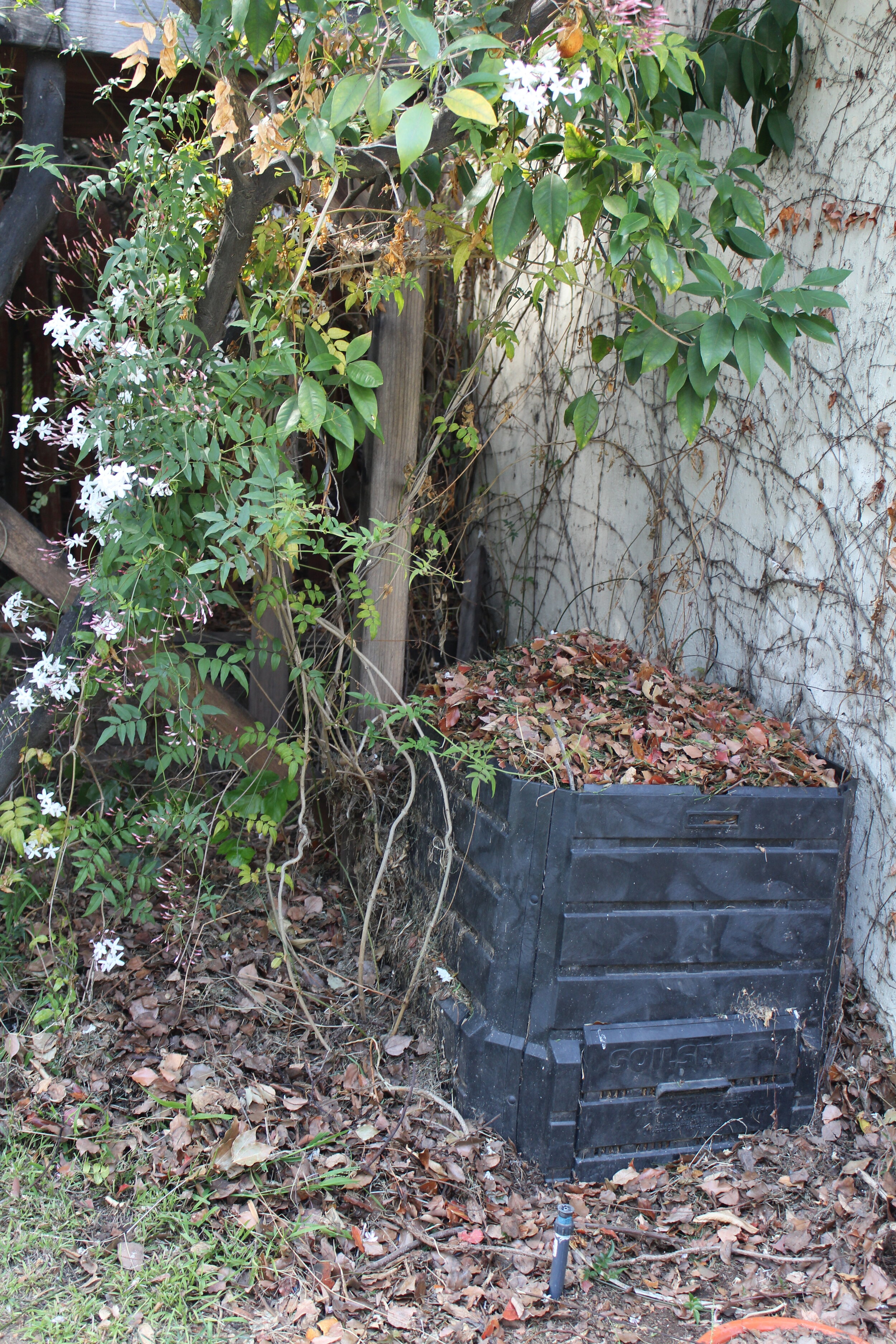
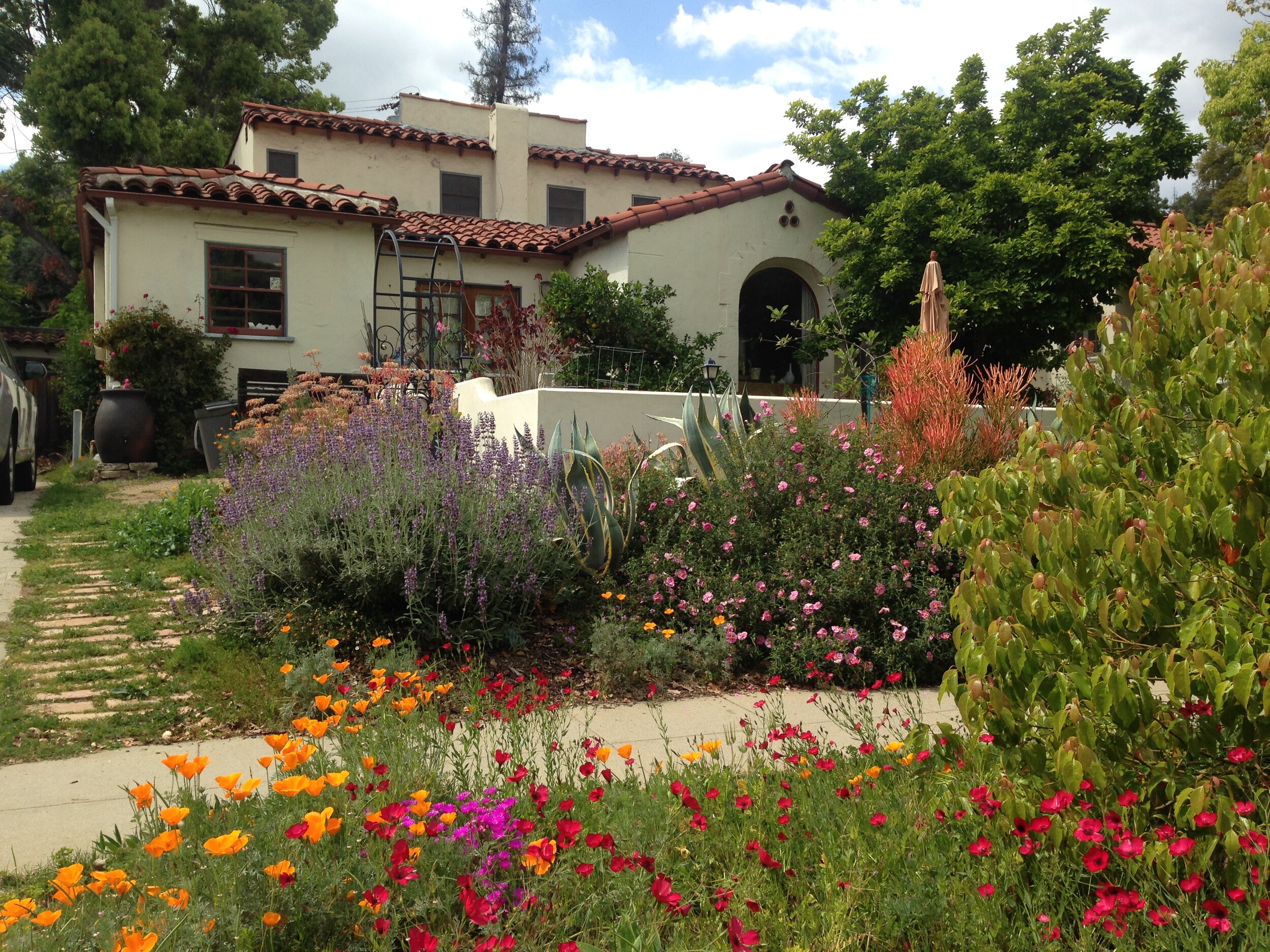
DROUGHT TOLERANT WALLED GARDEN
Living on busy Meridian Avenue, Lisa Zahra wanted to create a usable and beautiful space in her front yard. Her drought tolerant walled garden was a large-scale project that has evolved over several years. The project included building a smooth stucco wall, grass removal, dumpster, permits, plants, mulch, DG for the courtyard, watering and lighting system materials. She kept costs down by doing all of the labor herself, except for building the wall and some of the grass removal. She also bought small plants (which are much cheaper and easier to plant) and installed low-voltage lighting herself. Lisa was able to offset some of the cost by taking advantage of a grass removal rebate. She says “drought tolerant gardens are wonderful, but mulching, weeding and editing become very important. I don't have a gardener, so I try to start attacking the weeds in the late winter, after the rains (so the ground is softer) and the weeds are small and seedless. There are still some areas that I haven't tamed completely yet, but they remain on my list. Also, anything can be accomplished if you break it into small parts and work consistently. It also helps that I enjoy design and gardening.”
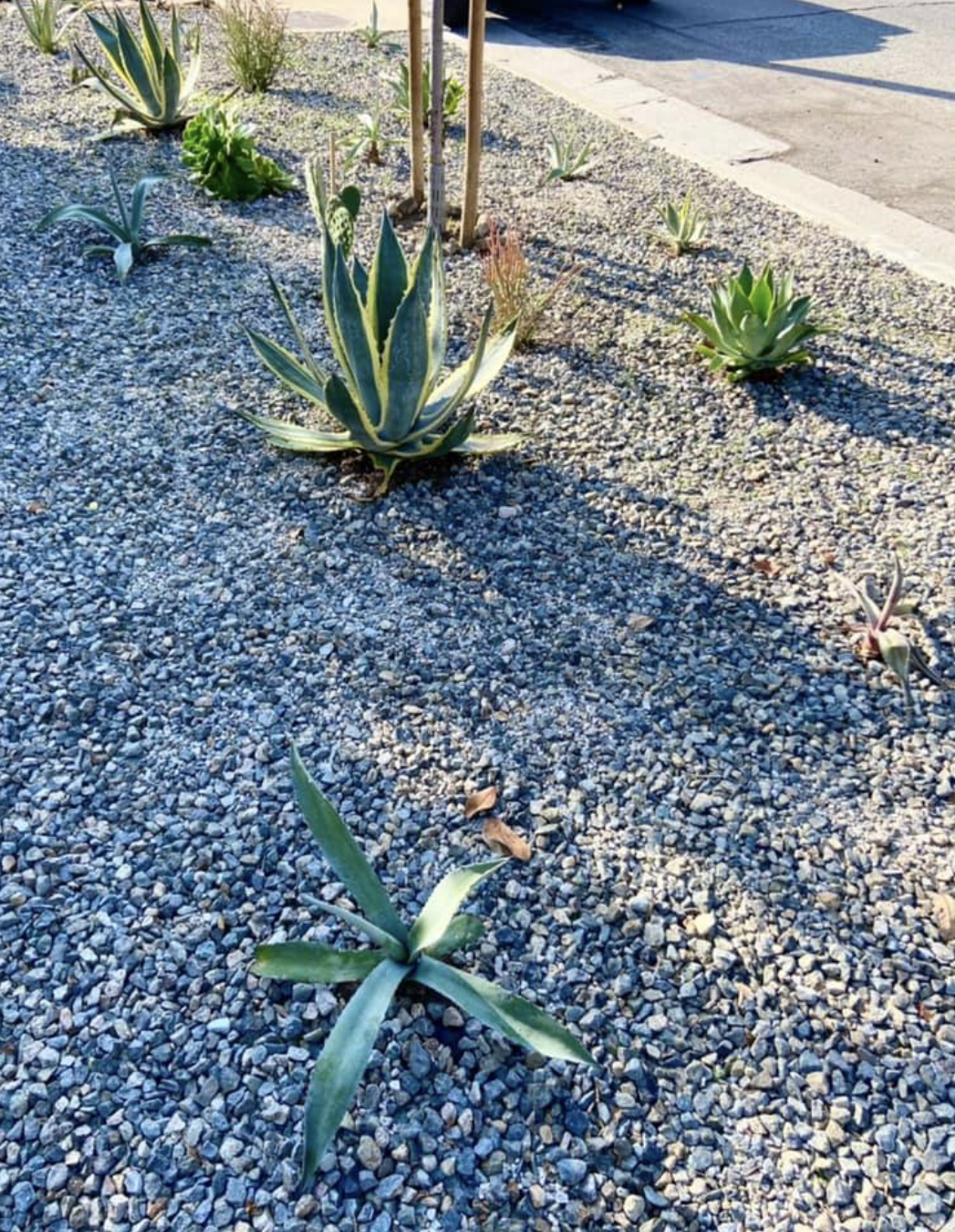
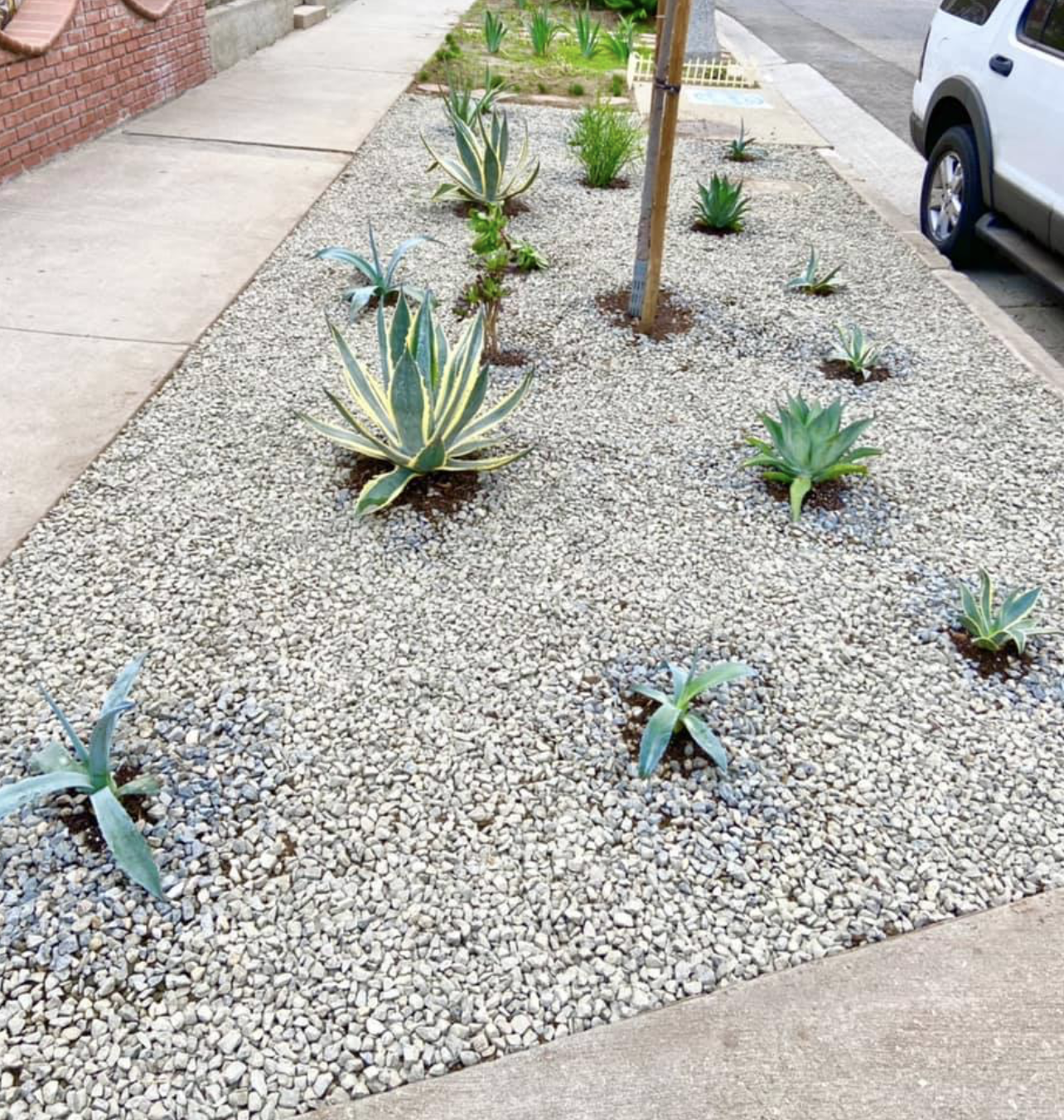
DIY LANDSCAPING THE PARKWAY
Cathy Lee wanted to create a drought resistant garden in her parkway which was covered with unruly weeds, but also wanted to do it sustainably and save money. After a friend gave her a box full of succulent cuttings from her yard, Cathy was inspired to fill her parkway with propagated succulents and agaves. Over the course of the next year, she patiently gathered cuttings offered by neighbors on the Buy Nothing Facebook Group, then rooted the cuttings in reused nursery pots and old pots she already had. When she had gathered and propagated enough cuttings, and when the weather finally cooled a bit last October, the Lees started landscaping. They began by tilling the parkway with a rented tiller, drawing up how the plants would be arranged, then digging holes and planting. The actual execution process took two consecutive weekends. They ended up buying a few large agaves to fill the space but the majority of what they planted were from friends and neighbors! They finished by covering the empty space with gravel. Upon completion, they filled the empty gravel bags with the dirt skimmed off after tilling, posted the bags on Facebook, Buy Nothing Group, and Craigslist. Each and every bag of dirt was picked up and kept out of the landfill! Lee says, “Be patient, take your time, and lots of googling! We saved so much money to create a beautiful drought resistant parkway that so many people have complimented us on. I won’t say it was easy, and you definitely need a supportive partner/spouse/friend/family to help you, but it was well worth the time and effort!”
RAISED BED PLANTER WITH SCREEN AND COMPOST BOX
Isabela and Jack Harrington wanted to build a planter that would help minimize issues with pests as they were having a lot of challenges with squirrels, aphids and other critters when using an open planter. They chose redwood for weather durability and pest resistance factors, although the project could be much cheaper if using a more affordable wood. Their beautiful planter is functional but also adds interest to their front yard. It reduces many of the pest problems but does not avoid them entirely: they still need to pair it with other organic systems to contain pests. However, it has eliminated the problem with big pests, such as the squirrels.
The Harringtons also built a box to compost food scraps and to have compost to feed their plants. Although the building was easy, Isabela says the mixing and watering frequently enough to expedite the composting process was a habit she had to develop over time. Isabela says, “It starts as a chore but then gets easier over time. You don't need to sweat if you don't tend to it for a couple of weeks or even more, composting will continue to happen, even if at reduced speed.” She also likes that she chose the open bottom system since worms and beneficial insects get in through the bottom and help expedite the composting process.
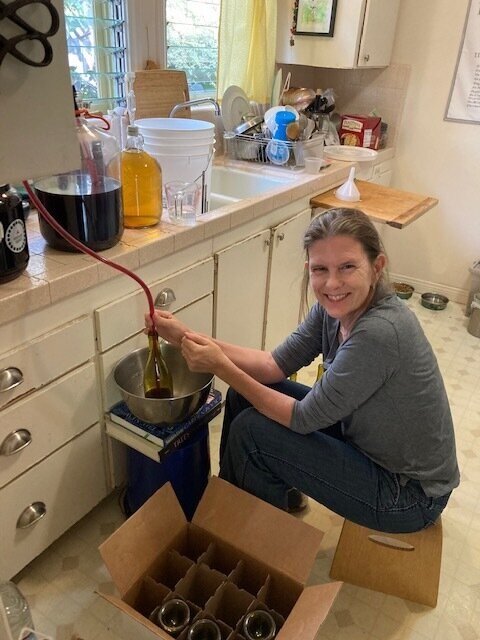
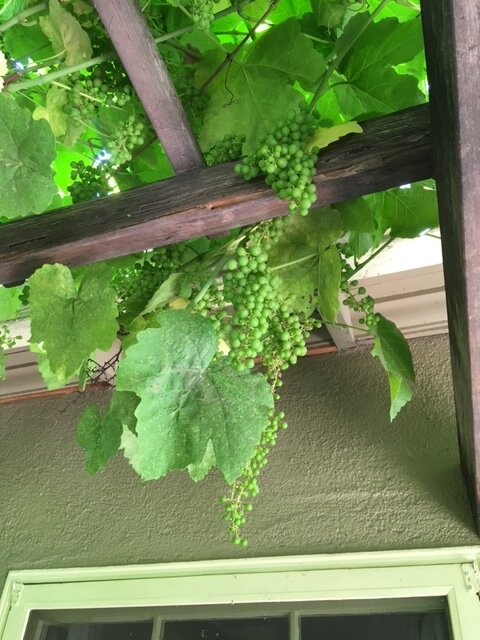
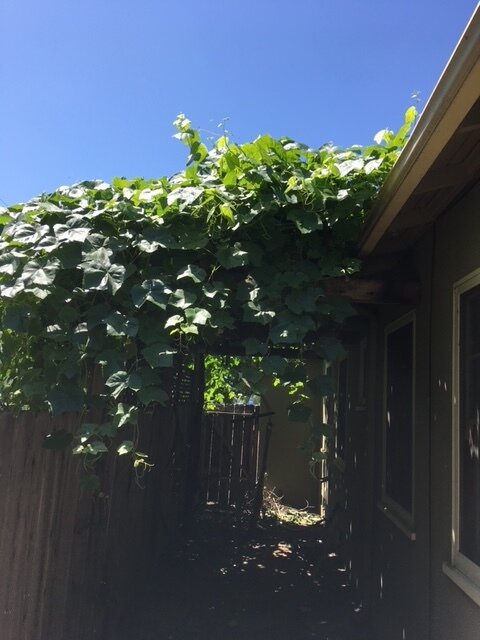

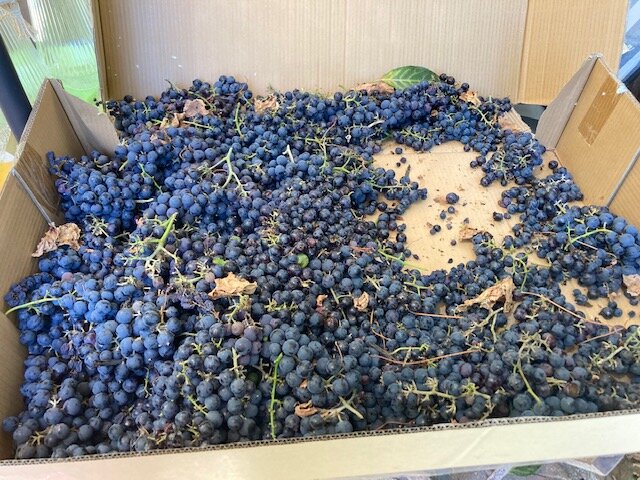
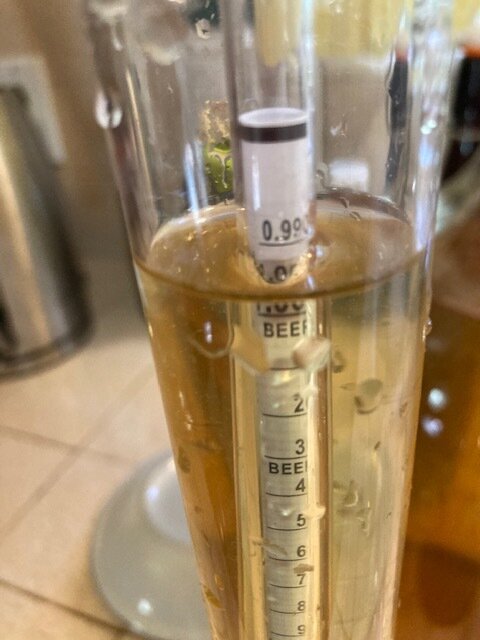
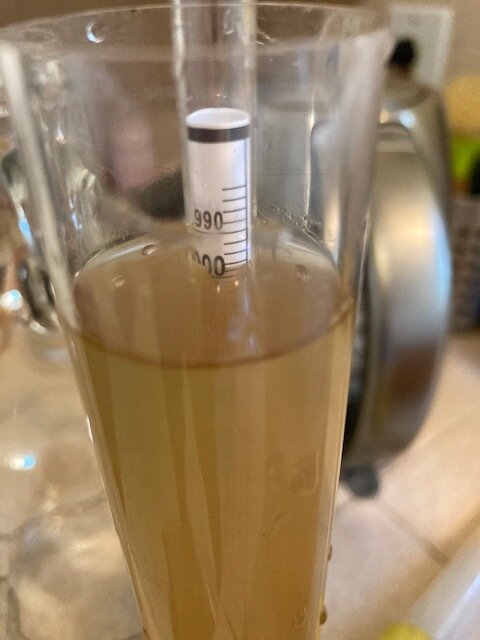
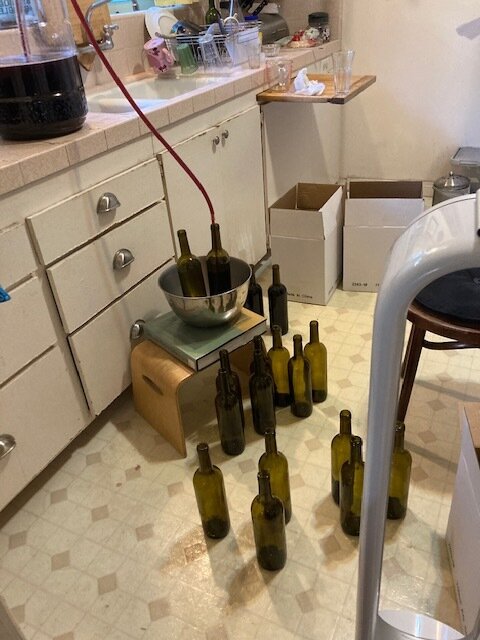
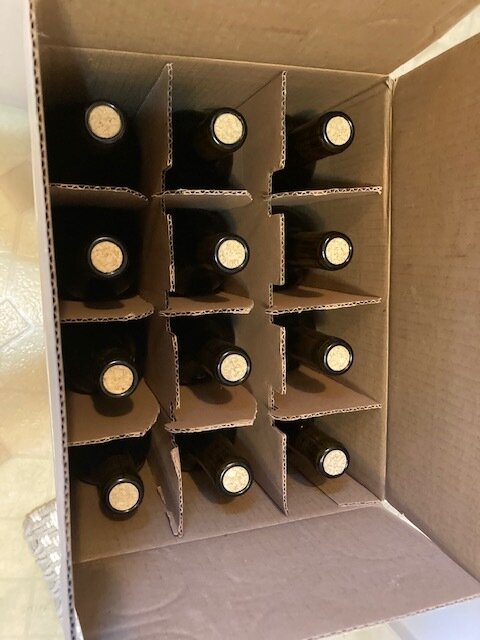
MAKING WINE WITH HOMEGROWN GRAPES
When Anita and Geoff Williams moved into their house, they inherited three grape vines that produce seedless grapes (black, green and red). Over the years they enjoyed fresh grapes and making jam and juice, but were always intimidated by making wine. This spring Anita was furloughed from work and decided to take on the project of learning to make wine to fill her time. She started with a wine kit to practice the process before her own grapes would be ready. Going through the process once really prepared her for tackling the project with her homegrown grapes. Anita says, “Making wine has long periods of quiet patient activity testing sugar levels, adding yeast, waiting and waiting some more, and with brief periods of a lot of activity, picking/stomping/lugging large jugs around and siphoning between carboys.” Anita would definitely recommend it to anyone. “The kits are fun and easy to use with pretty easy instructions. I got an additional book to research more of the finer points and that helped. We ended up with three types, my first a wine kit Merlot, my black grapes and then at the end of the summer the green grapes. I missed the opportunity with my red ones, I went back to work and got very busy when they were at the right ripeness….Wine making is magic, it takes grape juice and with time and yeast it transforms into wine. Throughout the process you learn a ton about wine and can nerd out on the ph, sugar and Tartaric acid levels. It’s a hobby that is pretty forgiving and low key but a fun conversation starter. I loved giving my bottles of wine as gifts at Christmas and sharing with friends.”
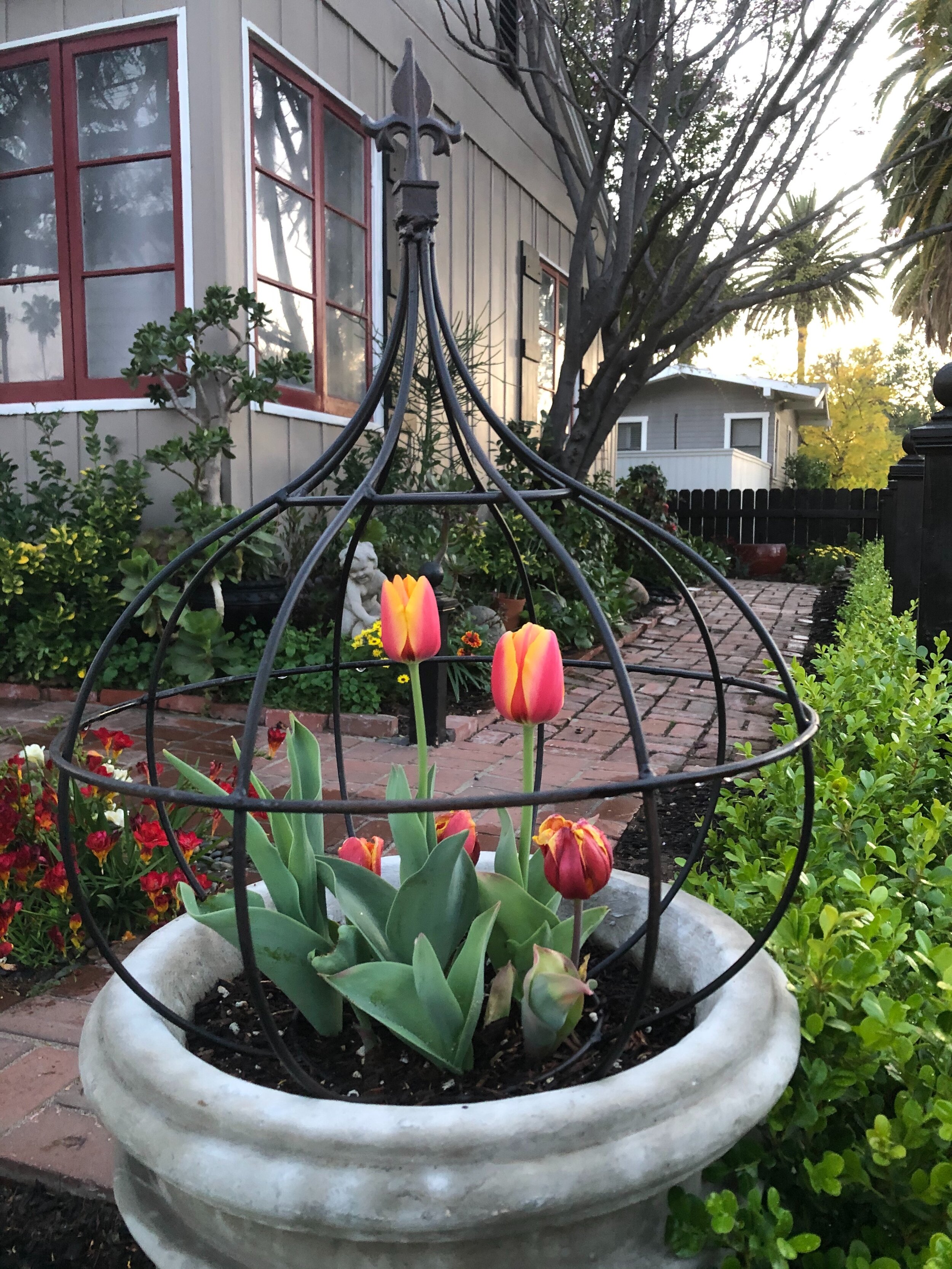
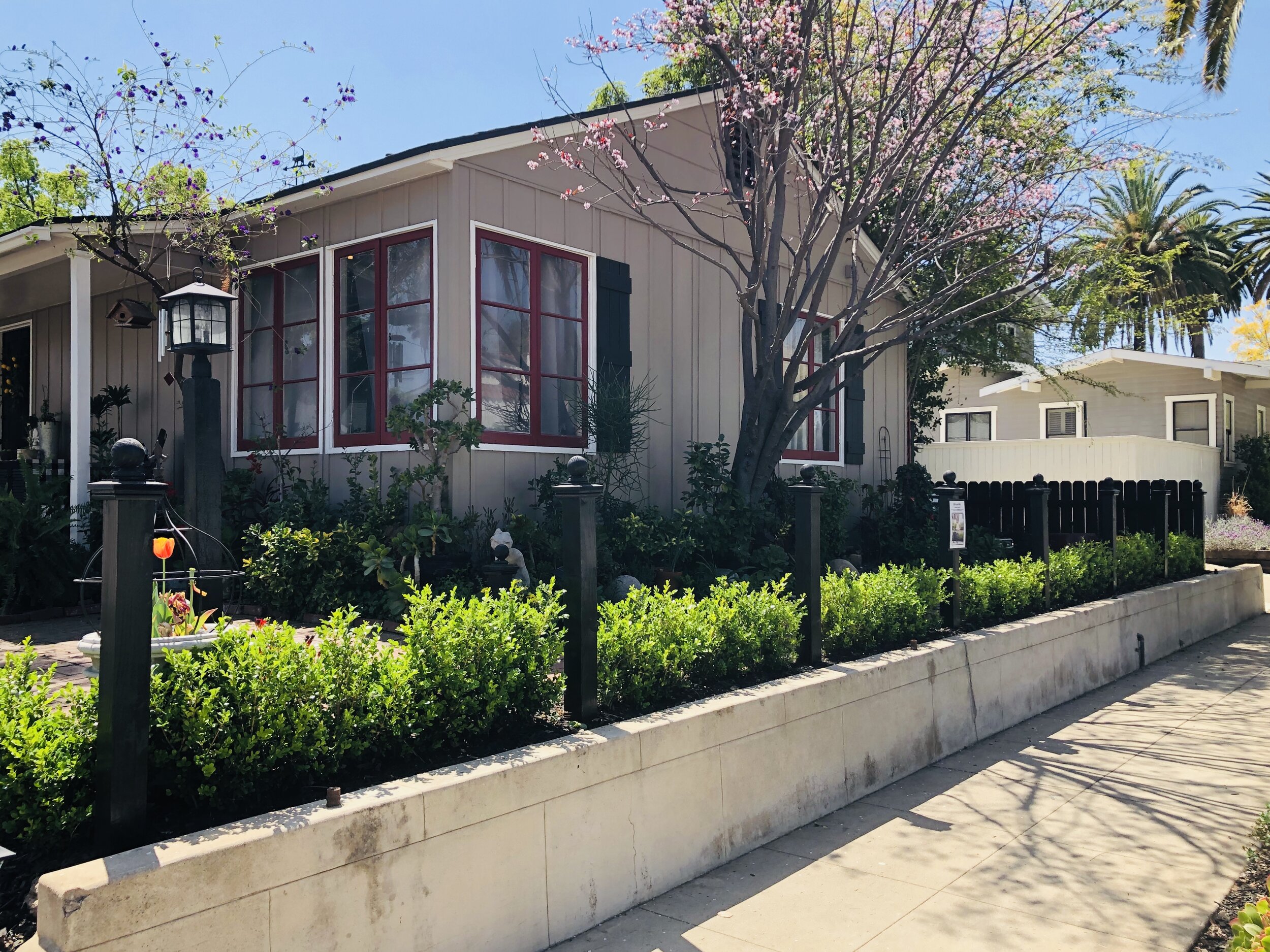
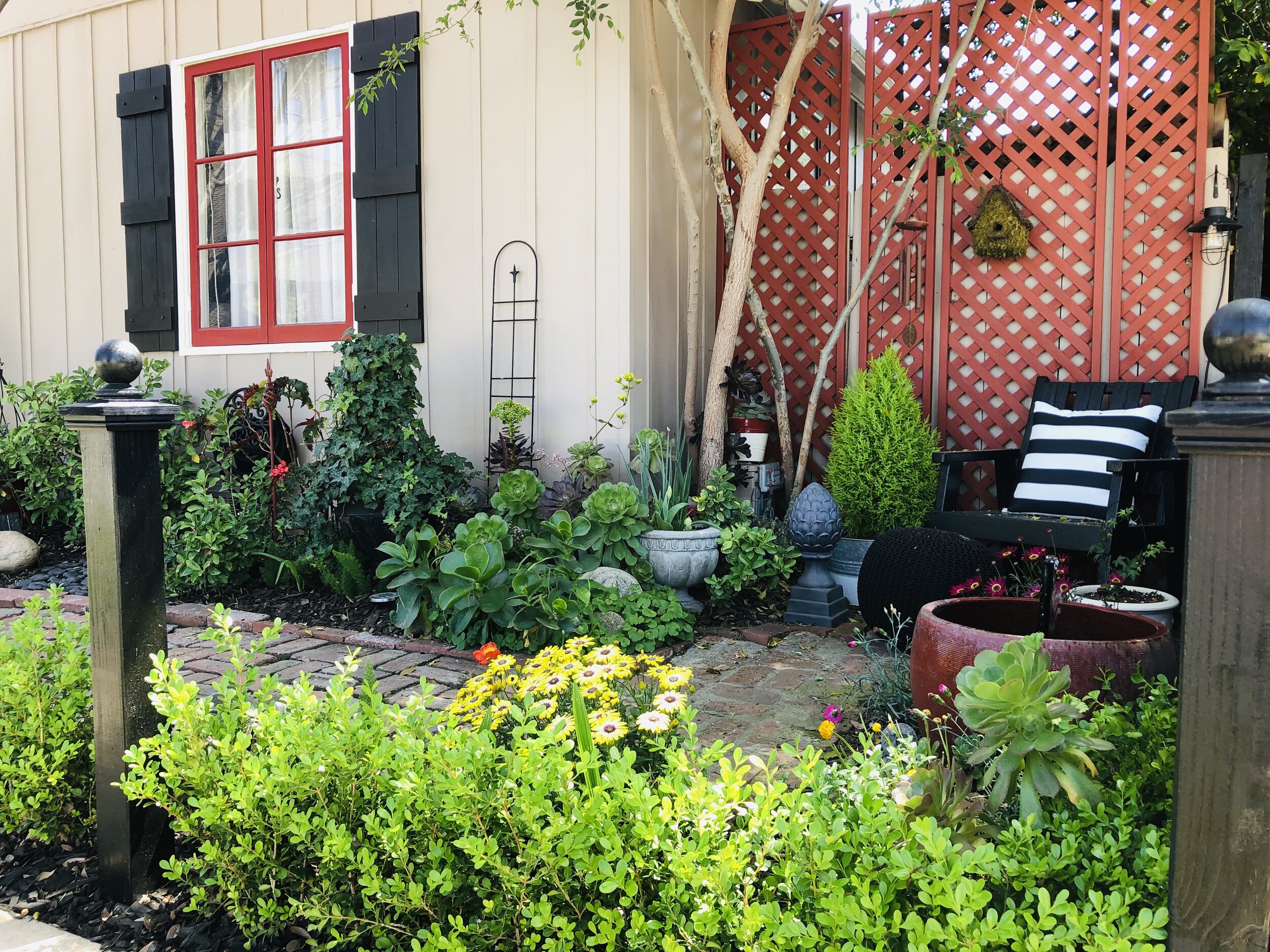
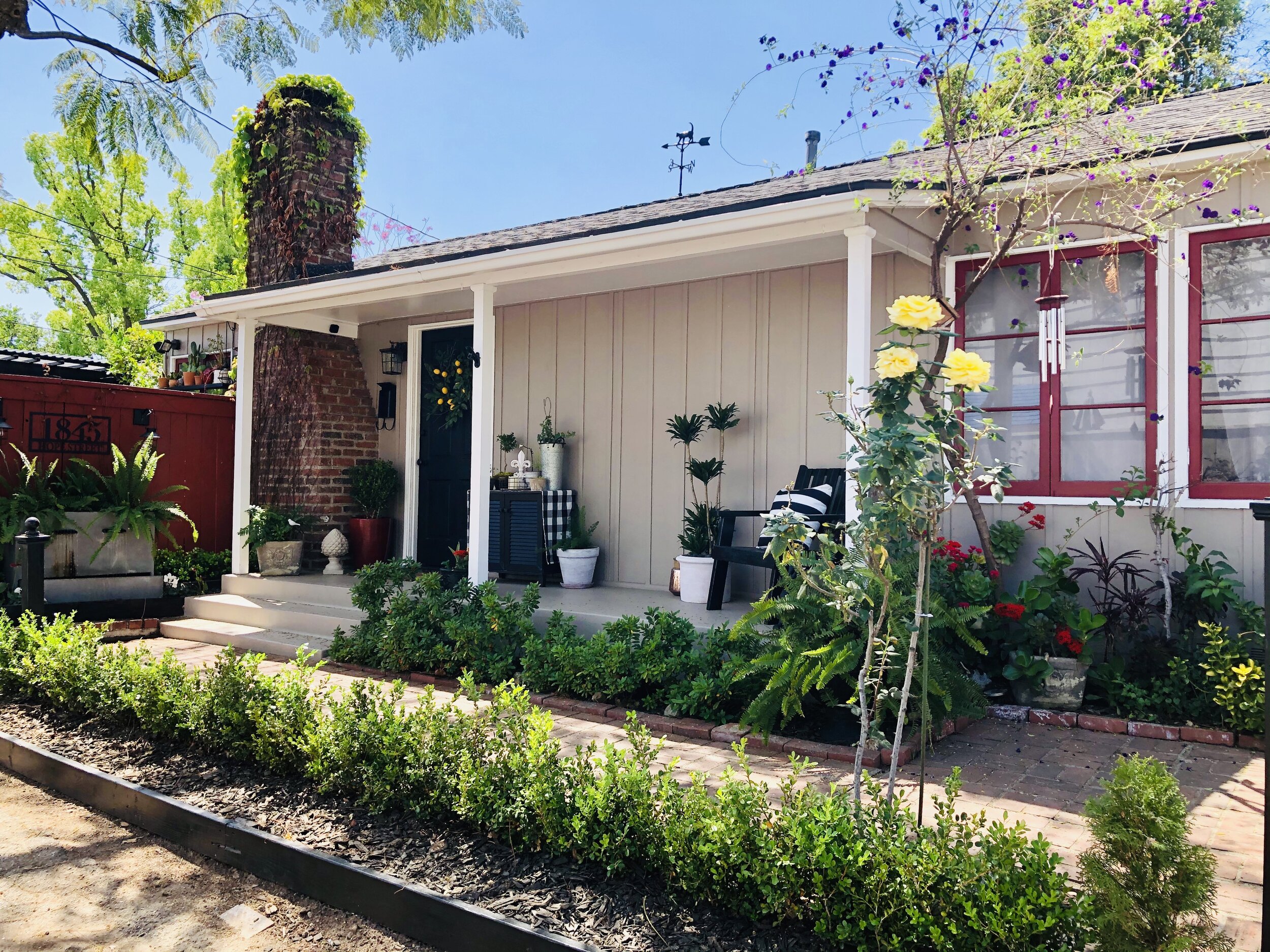
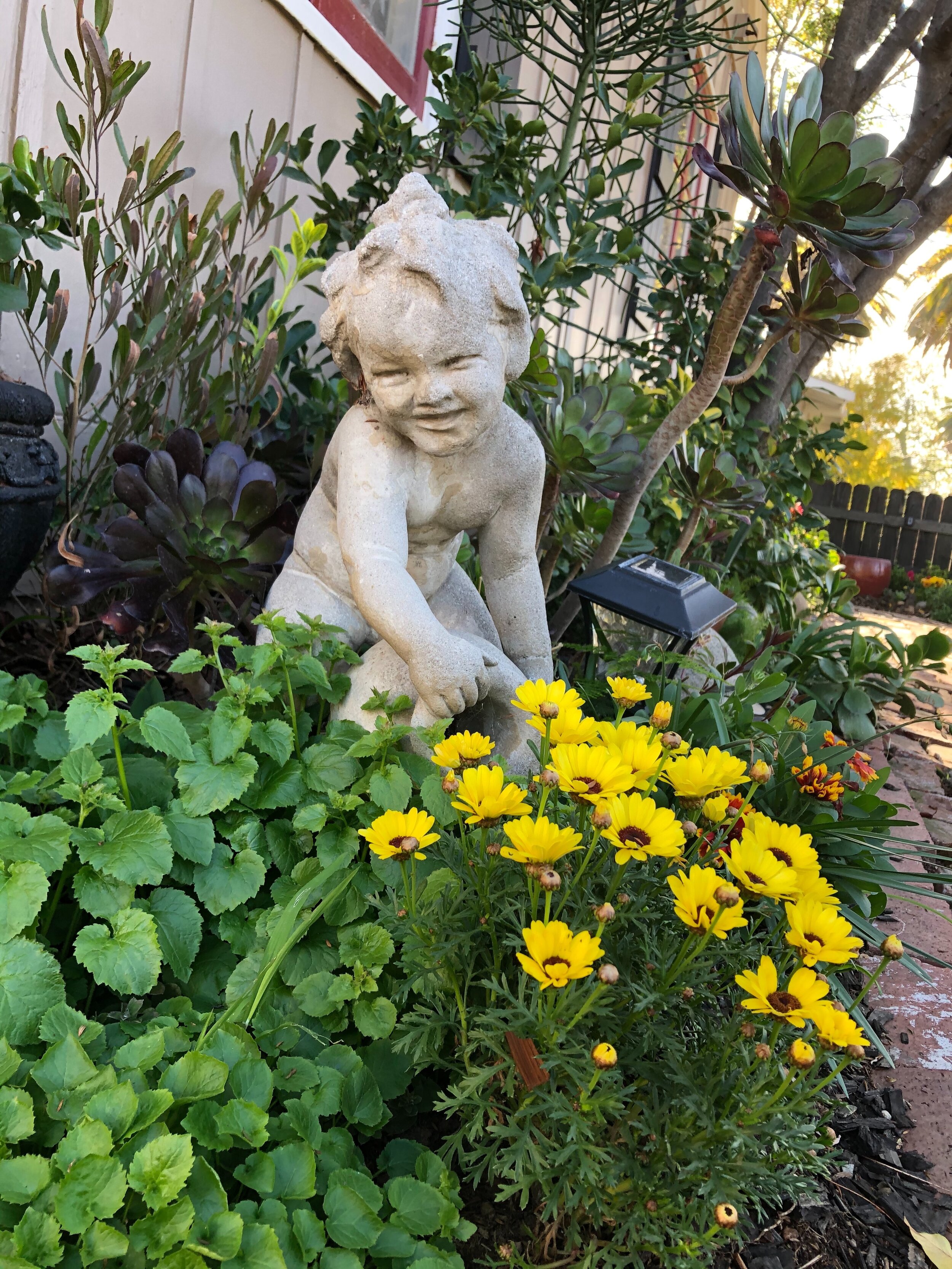
FRONT GARDEN MAKEOVER/FENCE REMOVAL
Marilyn Aragon’s project came together organically as a means of stress reduction. When COVID hit and suddenly, she was juggling working from home and kids with online school and not being able to go out, she needed a creative outlet to keep her sanity. She started working on replacing plants throughout her garden and soon, she was taking down an old fence and replacing it. Her vision of restoring her house back to its cottage glory kept growing. Marilyn says, “I live in an area where we get a lot of people walking by and the encouragement I received from strangers as well as my amazing neighbors was truly amazing. I have met so many lovely people this last year walking by.” By far the most challenging part of the project was removing the old cement post holes as some of the cement went 2-3 ft deep and 1-2 ft wide. Her neighbor’s landscaper, admiring her work, saw she was struggling and offered to drop off some of her tools the next day. The remaining cement came out a lot easier with her tools! Marilyn was so grateful and floored by her generosity and willingness to trust her expensive tools with a stranger. Items purchased for her project included a custom house sign, solar lights, 2 fountains, 2 decorative finials, new shutters, fence posts and tops, cement, several pots, 2 decorative plant trellises, soil, mulch, rocks, paint, a custom wood planter and all the plants. One special place in the garden is their newly installed weathervane which is in memory of their cat “One Eyed Willy” who went missing last November. He was a neighborhood favorite; people would come take pictures with him and bring him treats. He loved all his friends that came to visit him. When asked what words of encouragement she would give to others who may be interested in doing a similar project, Marilyn says to go for it. “Things are not as hard or intimidating as they may look. I have learned to do so many things by watching DIY YouTube videos. Your project will also be far more cost effective, leaving you with money to spend elsewhere. But the best part is sitting back and enjoying the reward of what you created and having the sense of pride and accomplishment.”
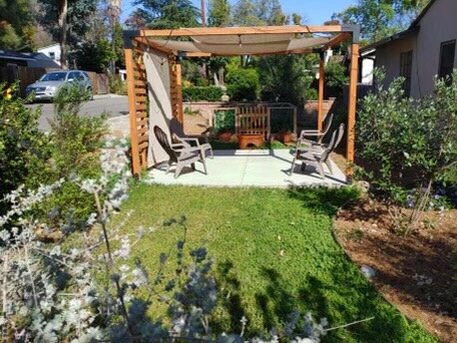
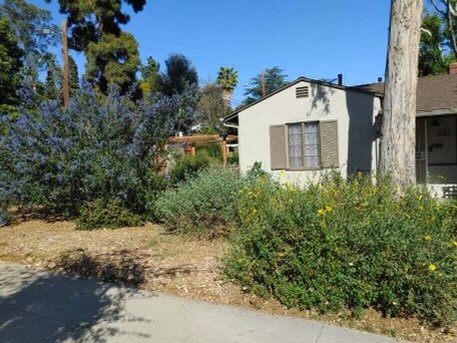
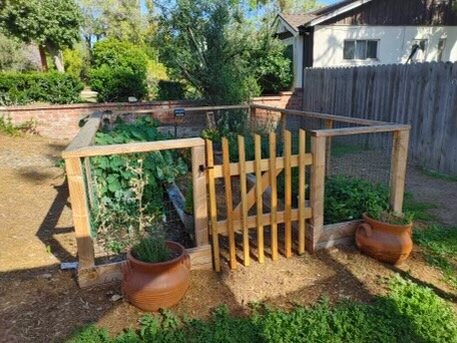

PERGOLA AND EDIBLE GARDEN
Since Wendy Alvarez likes knowing where her food comes from and loves the garden to table nutrition, she wanted to grow her own vegetables, herbs and fruit. She had had many ideas on how to start the garden but never executed them until quarantine hit. The quarantine also gave her time to do some research to make sure she was planting the right edibles together and that her veggies would thrive. For Wendy, “Filling up your plate with food you have grown makes you feel happy and accomplished. We are the only ones that can take care of our heath and what a better way than to eat something you took the time to grow.” Additionally, she decided to build a pergola to have a place to sit and enjoy outdoor family time. Although cutting to size and staining the wood was a challenge at first, she says, “the end result is worth it when you see your family sitting and enjoying an ice cold lemonade on a beautiful spring day.”
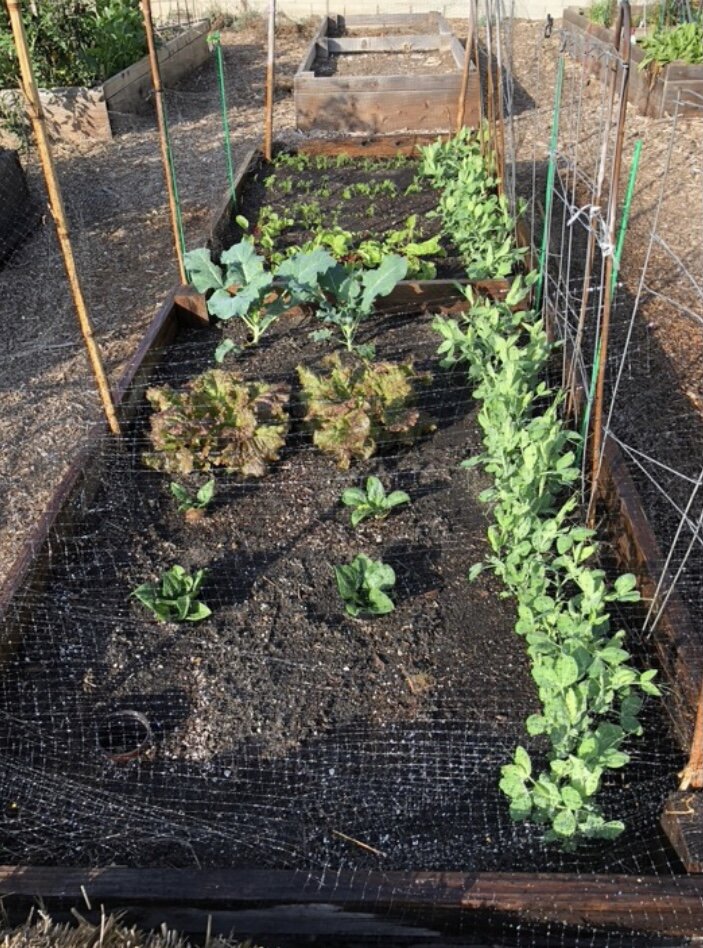
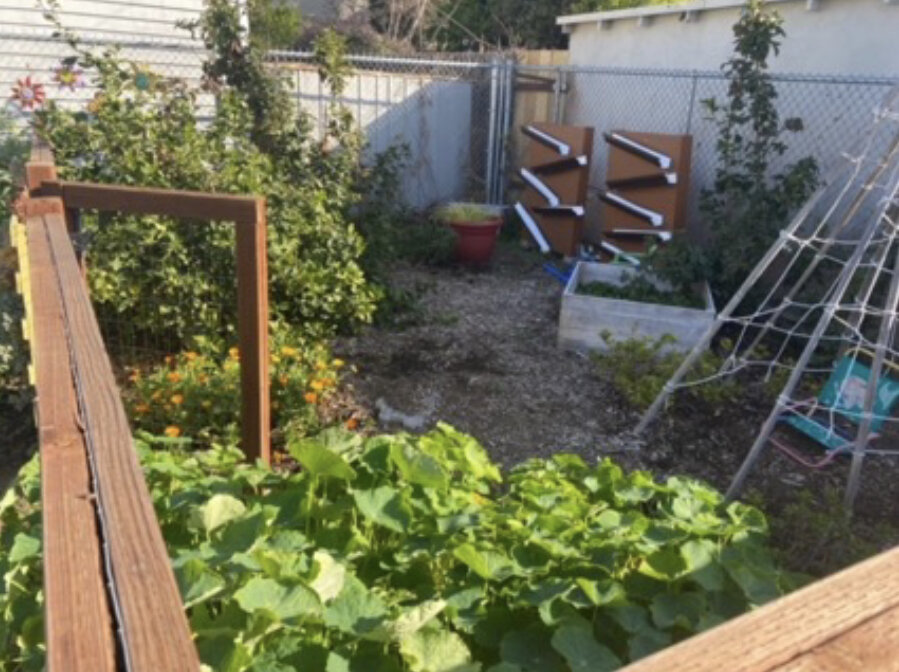
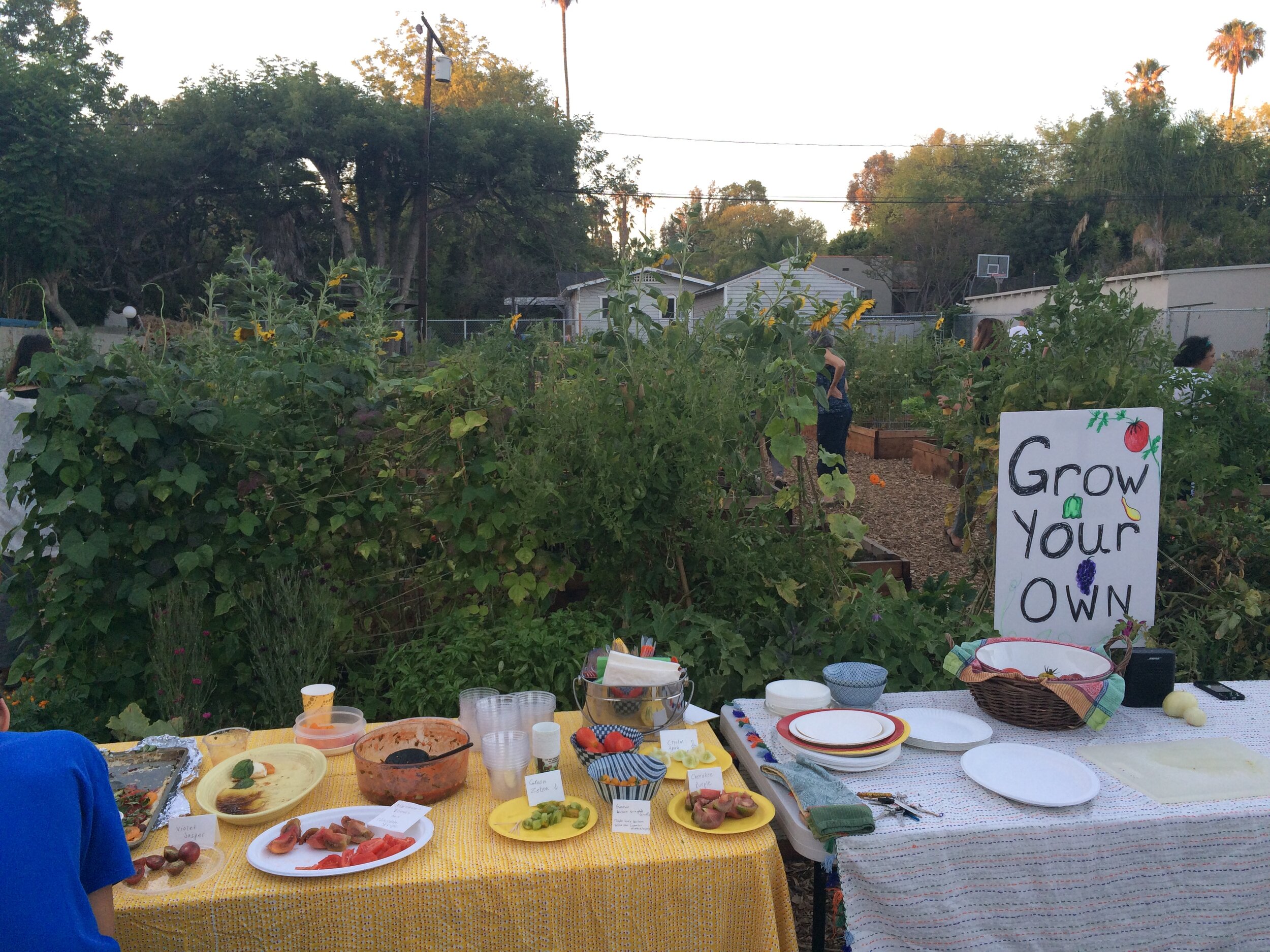
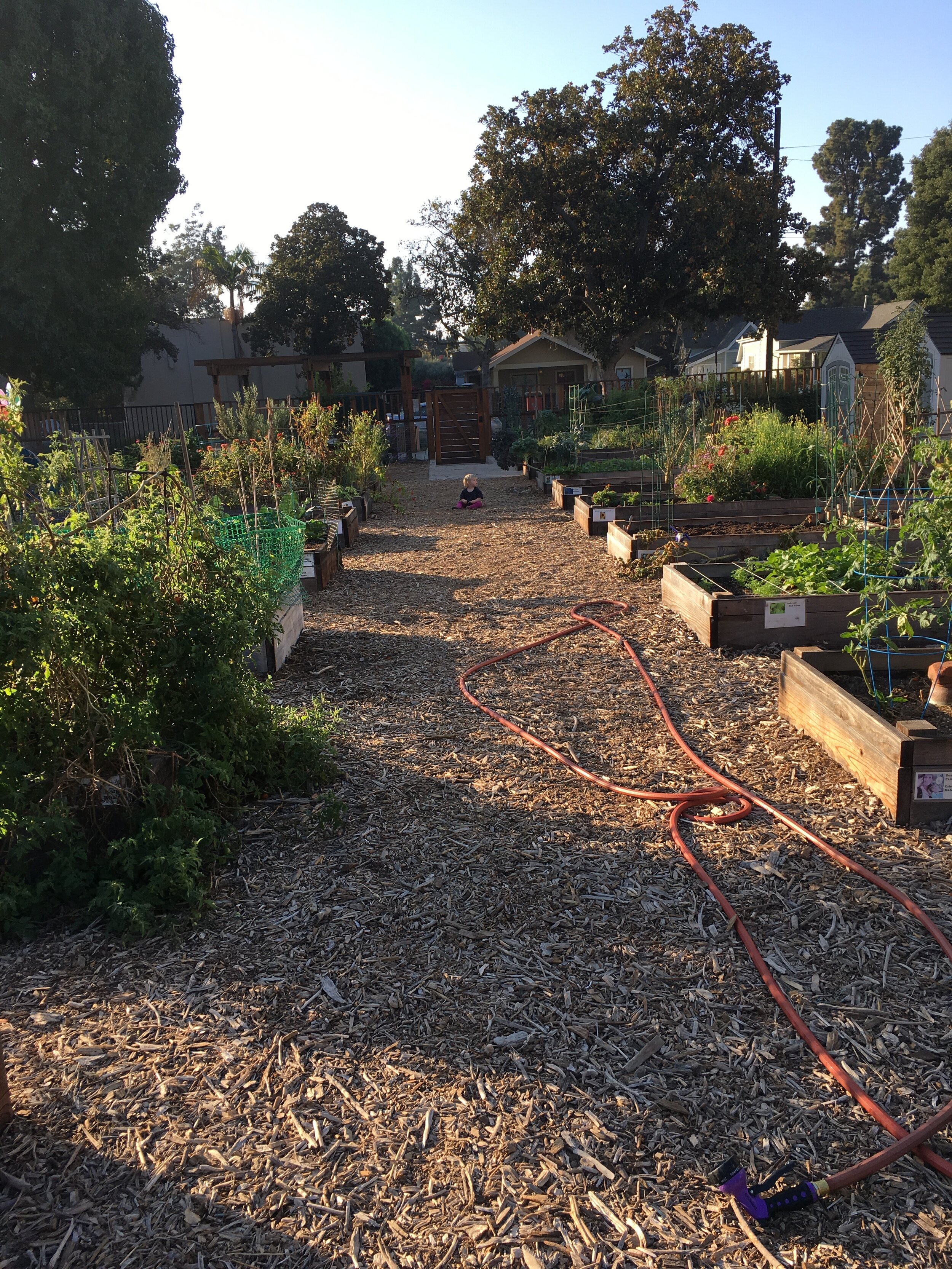
SOUTH PASADENA COMMUNITY GARDEN
You can’t skip the South Pasadena Community Garden when talking about sustainable DIY projects in South Pas. The garden was started in 2015 and continues to thrive because of the work of dedicated volunteers. The garden includes 39 raised beds, a children’s garden, an “unruly bed” (where gardeners can plant unruly vegetables like squash, watermelon, and other viny things), communal fruit trees, and so many other treasures. The garden is accessible to all who have a plot except for when it is also open to the public for monthly (during non-COVID times) garden meetings and workshops. In order to reserve a plot, you can visit the City of South Pasadena website to download an application.
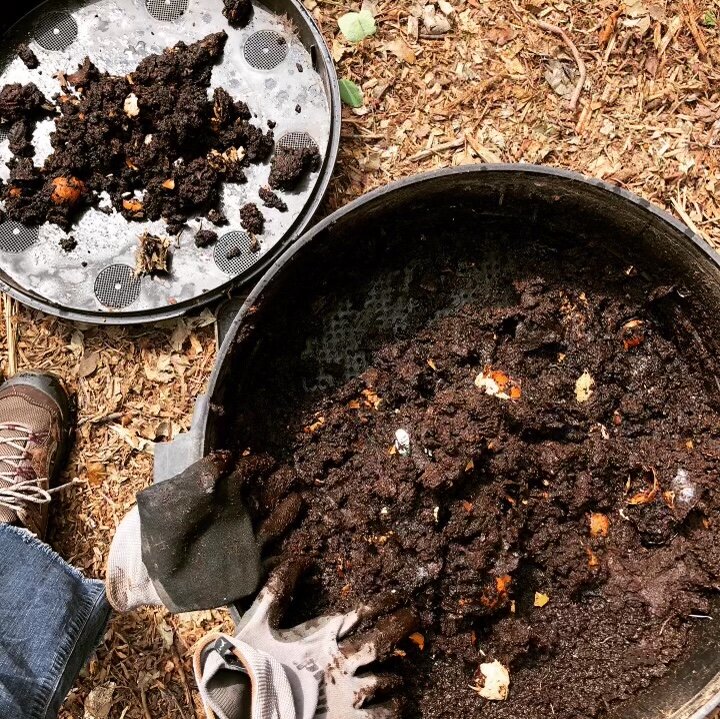
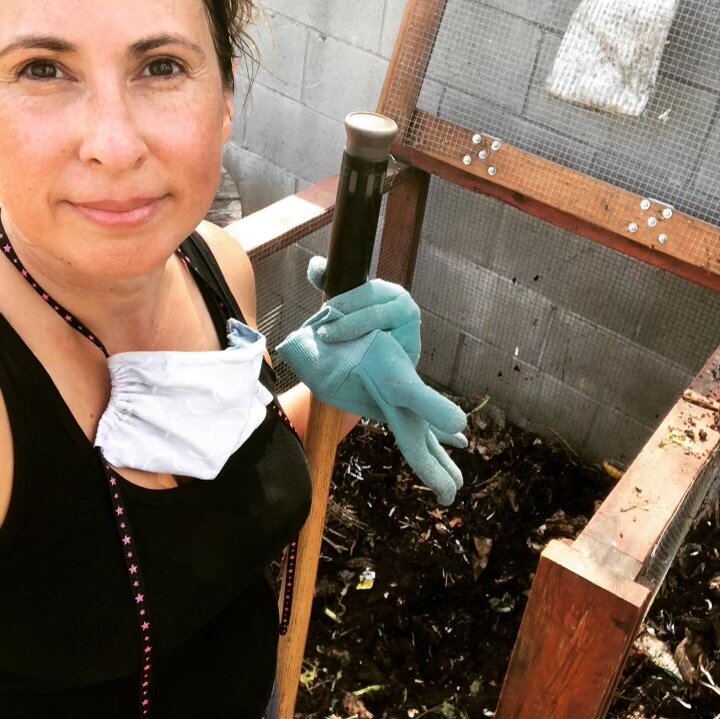
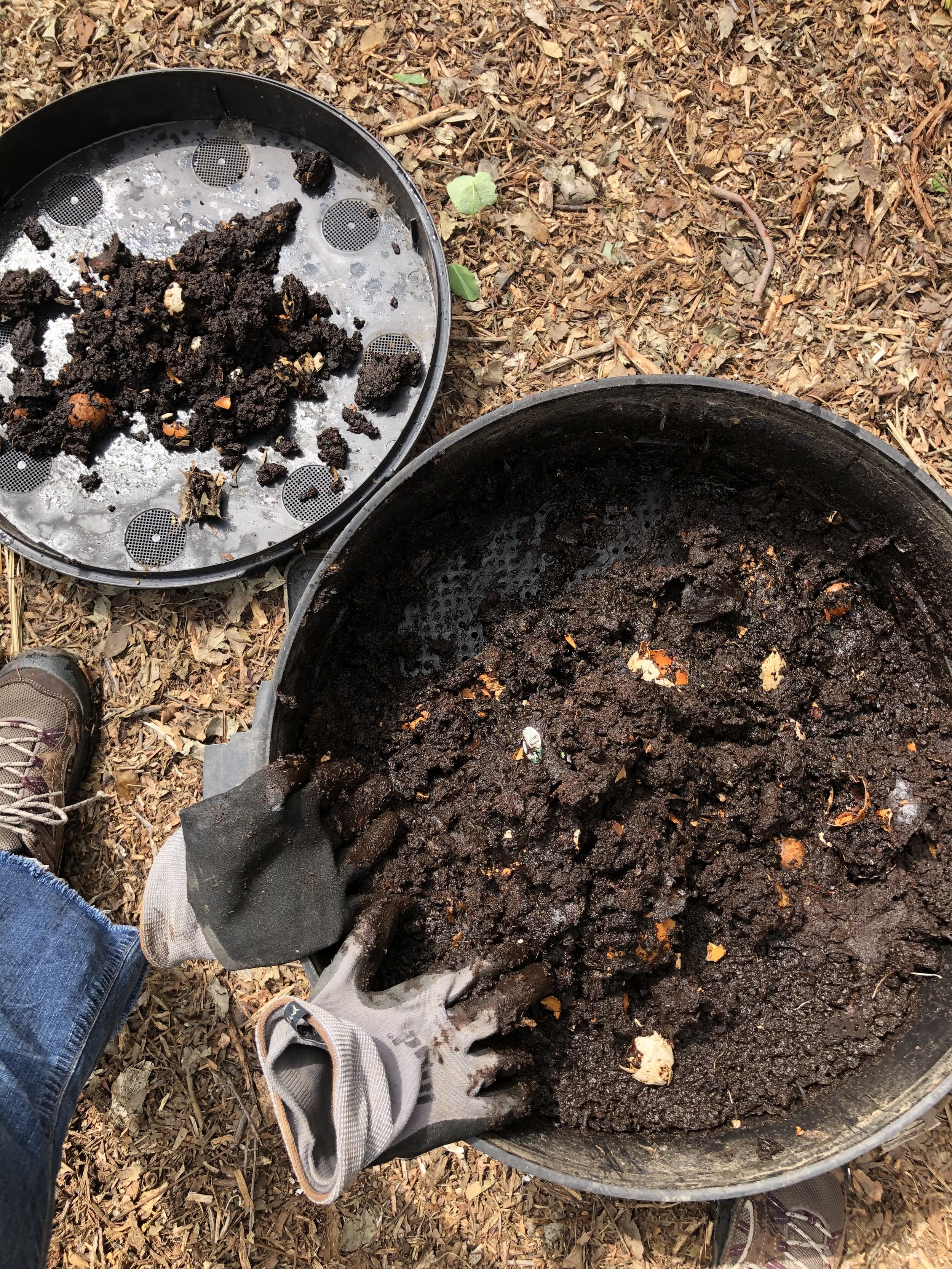
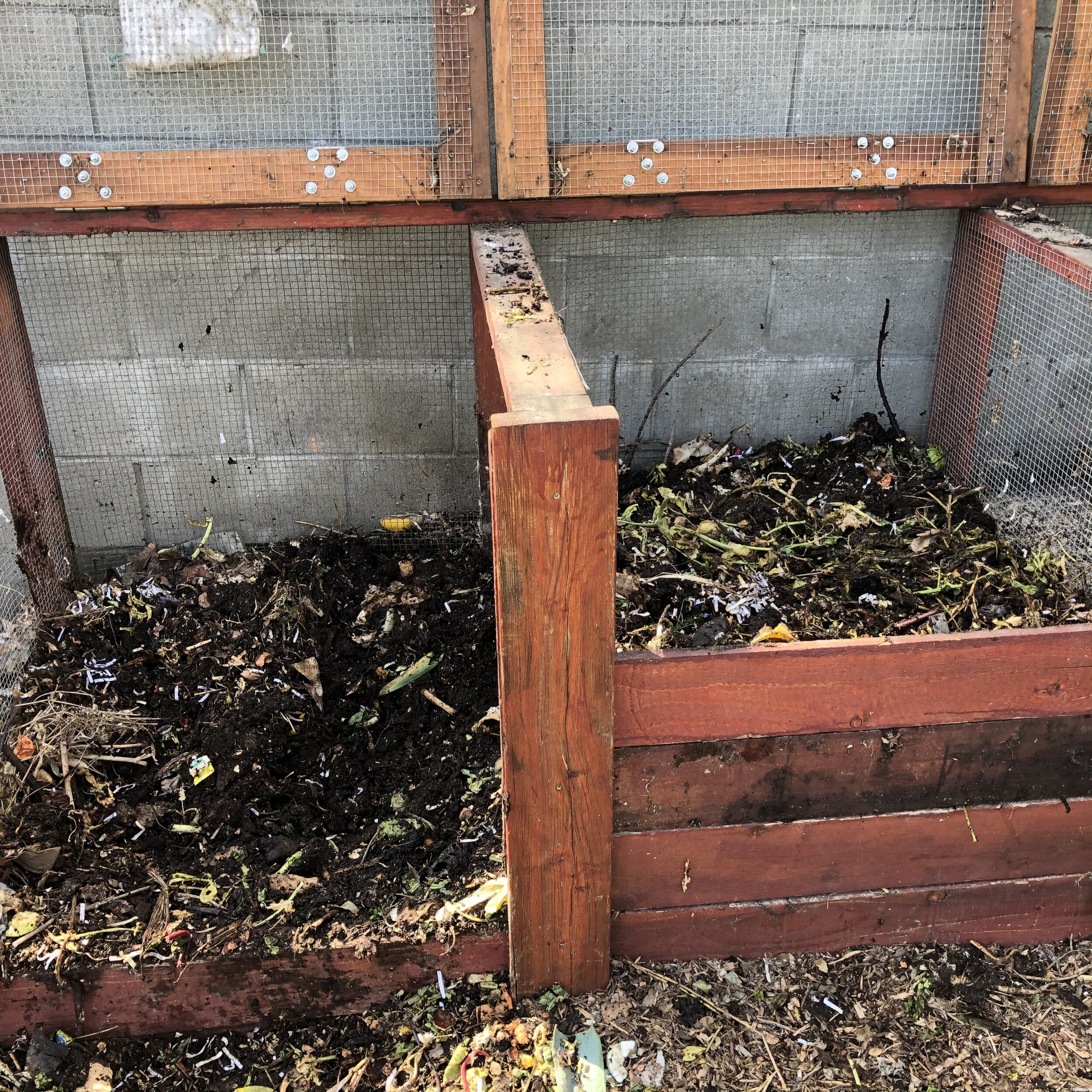
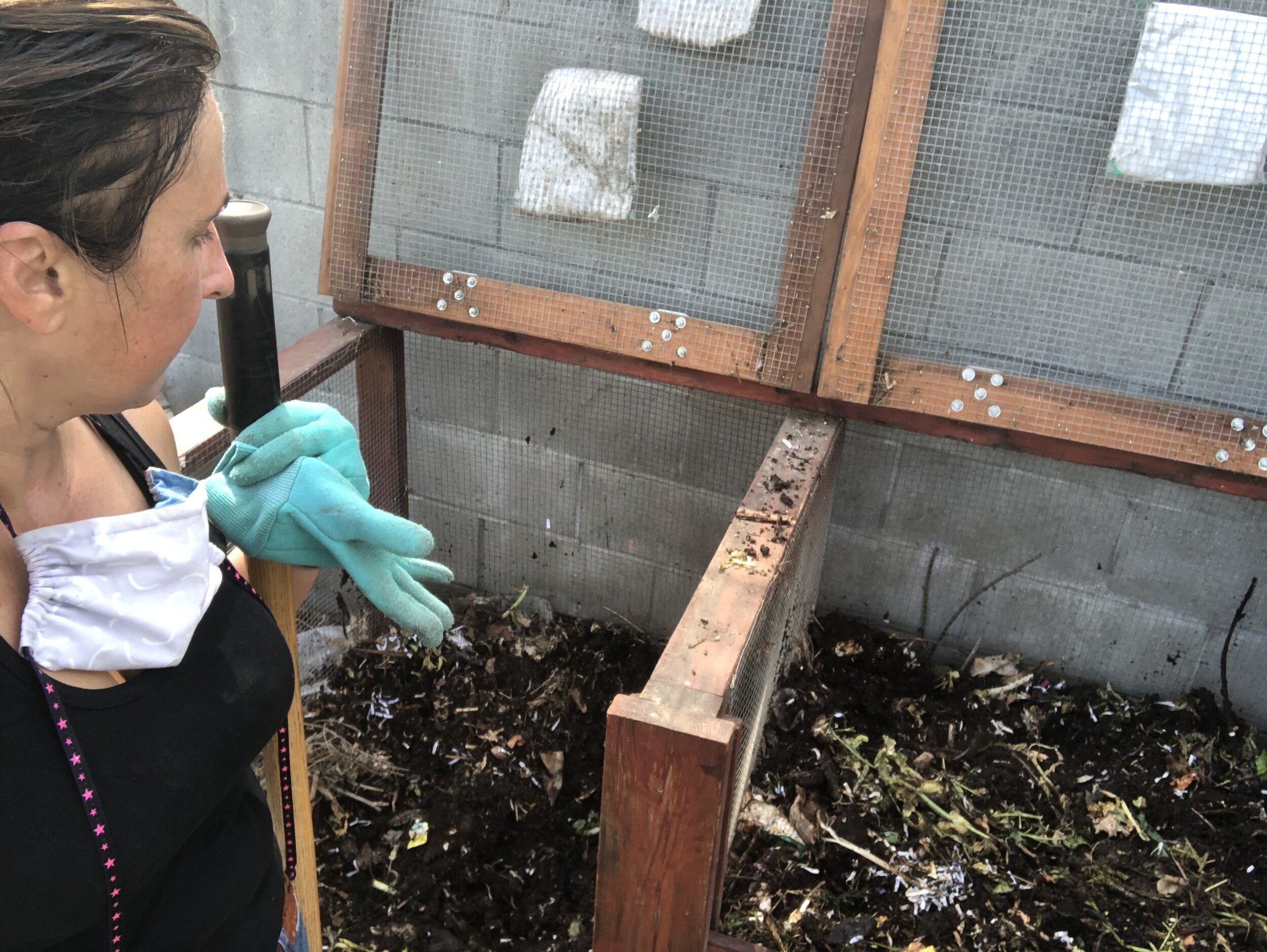
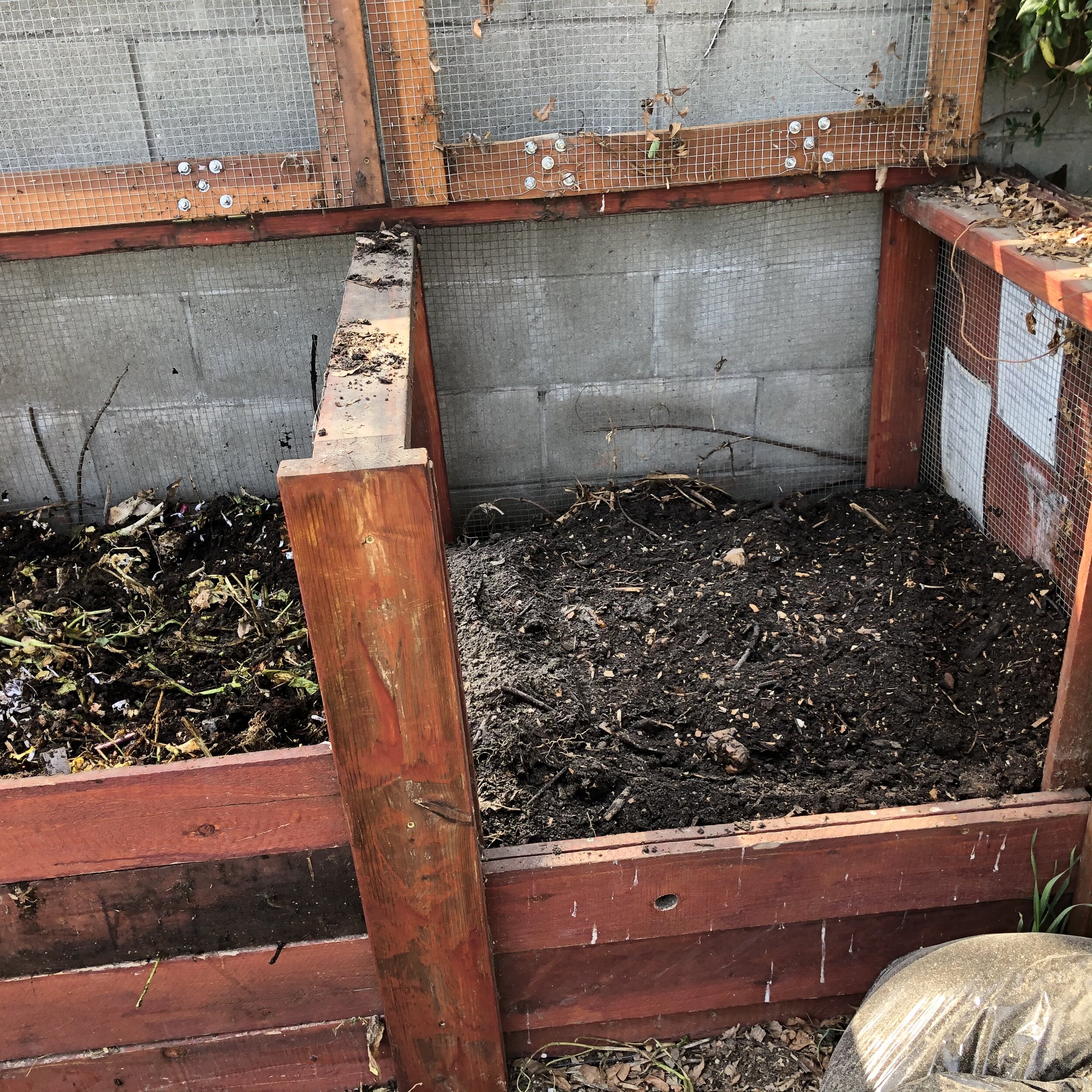
COMPOSTING
Michelle Hammond has recently taken on the role of Compost Management at the South Pasadena Community Garden. In other words, she currently tends to a worm bin and the larger compost bins for the garden. Composting organic waste is something she has been passionate about for some time, having previously taught vermicomposting and how to make your own worm bins. Additionally, Michelle used to compost most of the kitchen scrap waste from her restaurant. “I love teaching more people about how to waste less and the other many benefits of composting.” She adds, “Don’t be afraid to get your hands dirty and try composting at home. It’s a forgiving process and even if you have moments when it becomes unbalanced, it’s easy to get it back on track.”
Earth Day DIY Projects Webinar
April 18th - 4 PM
Want to learn more? Have questions? Join South Pasadena Beautiful in learning about sustainable DIY projects from local residents including wine making, composting, growing food, and more at our Earth Day DIY Projects Webinar.
Join Zoom Meeting: https://us02web.zoom.us/j/4664641966?pwd=bzNYTHozb3ZFcTc4eUtVSVIveWZHUT09
Thank you to all the participants and the NREC for working with us to make our virtual Earth Day possible.

